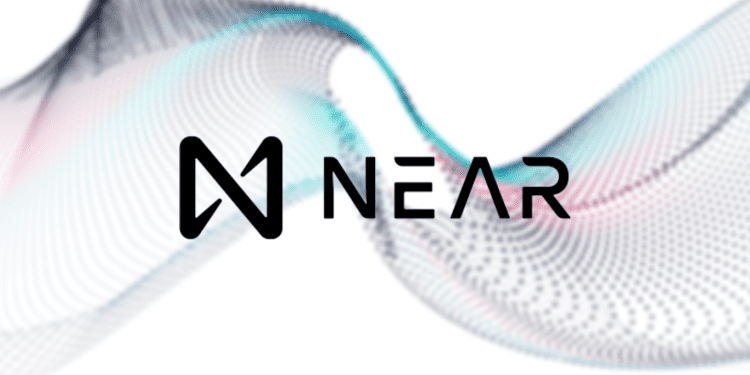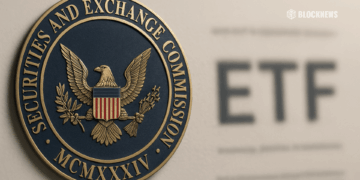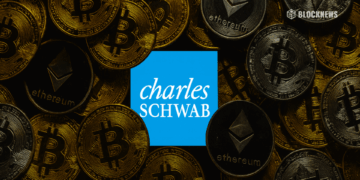- EVM ecosystems have made improvements to enable more efficient cross-chain transfers.
- NEAR Protocol just launched the Fast Rainbow Bridge on the mainnet.
- Neon Labs releases Neon EVM to enable ERC-20 smart contracts to be executed, and transactions settled on Solana.
Achieving seamless interoperability between different blockchain networks has become increasingly vital and challenging. Two recent developments, NEAR Protocol’s Fast Rainbow Bridge, and Neon EVM, drastically improve Ethereum’s interoperability with other blockchains. These innovations facilitate faster and more efficient token transfers, unlocking new opportunities for developers and users.
Fast Rainbow Bridge: Accelerating Token Transfers
The Fast Rainbow Bridge introduces an unprecedented option for transferring tokens from the NEAR Blockchain Operating System to Ethereum in just minutes, significantly surpassing the conventional Rainbow Bridge’s speed. The Rainbow Bridge is a bridge protocol that enables the exchange of assets between Ethereum and other blockchain networks.
How the Rainbow Bridge transfers tokens:
- Asset Lock: When a user wants to transfer tokens from Ethereum to another blockchain, the Rainbow Bridge initiates the process by locking the tokens on Ethereum. This is typically done by a smart contract that holds the tokens in a secure escrow.
- Proof of Lock: Once the tokens are locked, a proof of the transaction is generated. This proof proves that the tokens have been successfully locked on Ethereum and are ready to be transferred to the other blockchain.
- Bridge Validators: The Rainbow Bridge relies on a network of validators or relayers who verify and validate the transaction. These validators ensure the integrity of the transfer process by confirming that the tokens have been locked and the proof is valid.
- Token Creation: Upon receiving the proof of lock, the validators mint or create equivalent tokens on the destination blockchain. These tokens represent the locked assets on Ethereum and allow their use within the other blockchain’s ecosystem.
- Cross-Chain Transfer: The newly minted tokens on the destination blockchain are made available to the user, who can then utilize them within that network as desired. This enables the seamless transfer of assets from Ethereum to the other blockchain.
- Proof of Unlock: When a user wants to transfer tokens back from the other blockchain to Ethereum, a similar process occurs in reverse. The user initiates the transfer on the other blockchain, the tokens are locked on that blockchain, and a proof of lock is generated.
- Token Unlocking: The proof of lock is then sent to the validators, who verify its authenticity. Upon successful verification, the validators burn or destroy the tokens on the other blockchain and release the equivalent amount of tokens on Ethereum.
- User Access: The unlocked tokens on Ethereum are made available to the user, who can now freely use them within the Ethereum ecosystem or transfer them to other Ethereum addresses as needed.
The Rainbow Bridge sends a NEAR block hash to Ethereum once every four hours due to Ethereum’s insane gas fees. The Classic Rainbow Bridge also utilizes an optimistic approach where network validators don’t immediately authenticate block transfer signatures, delaying transfer finality. These factors cause users to wait up to 8 hours for transfers and demonstrate the Rainbow Bridge’s limited block transfer frequency.
To address this limitation, the Fast Rainbow Bridge implements the following components:
- LP-Relayer (Liquidity provider relayer): An off-chain service that holds liquidity in tokens on both Ethereum and NEAR, facilitating rapid token transfers between the two networks.
- NearFastBridge: A smart contract on NEAR that locks tokens and transfers them to the relayer upon proof of the finalized transaction on the Ethereum side.
- EthereumFastBridge: A contract on Ethereum utilized by the relayer to transfer tokens to users, generating events of token transfers on the Ethereum side.
This decentralized and trustless solution fosters competitive markets among relayers, ensuring swift transfers and enabling users to reclaim their tokens if transfers are not completed within the designated time window. Moreover, the Fast Rainbow Bridge covers the gas fees on the Ethereum side, relieving users of the burden and mitigating potential gas price fluctuations.
Neon EVM
Neon EVM represents a groundbreaking solution that enables Ethereum DApps to settle transactions on the Solana blockchain, bridging the gap between these two major networks.
By integrating Neon Labs, Ethereum developers can harness Solana’s low fees, high transaction speeds, and parallel transaction execution capabilities. Parallel transactions refer to multiple transactions occurring and being validated simultaneously rather than sequentially.
Previously, Solana’s incompatibility with the Ethereum Virtual Machine (EVM) posed challenges for multichain DApp development. However, Neon EVM eliminates this limitation, opening Solana’s extensive ecosystem to Ethereum developers. Neon EVMβ, the closed beta version, has been launched on Solana’s Mainnet, allowing ecosystem players to test and integrate their services before the official launch. During the closed beta phase, Neon EVMβ supports fee-free transactions settled in SOL.
Conclusion
Developers now have the flexibility to leverage the strengths of multiple blockchains. With the Fast Rainbow Bridge, they can seamlessly transfer ERC-20 tokens from NEAR to Ethereum within minutes, unlocking new possibilities for building decentralized applications that require interoperability between these two ecosystems. Similarly, Neon EVM allows Ethereum developers to tap into Solana’s capabilities, expanding their scalability, transaction speed, and cost-efficiency options.
The Fast Rainbow Bridge and Neon EVM prioritize user convenience by reducing transfer times and eliminating the need for users to pay gas fees directly. The Fast Bridge lets users quickly bridge their assets, allowing smoother interactions between different blockchain networks. Neon EVM enables Ethereum users to access Solana’s ecosystem, benefiting from its low fees and high transaction speeds without compromising on the familiarity and functionality of Ethereum DApps.
The increased interoperability between Ethereum and other blockchains strengthens connections and collaborations within the broader blockchain ecosystem. Developers can tap into the features and user bases of different networks, fostering cross-chain innovation and expanding the reach of decentralized applications. This interconnectedness promotes synergy among blockchains, paving the way for a more robust and scalable decentralized future.
As these solutions evolve and mature, we can expect more significant advancements in cross-chain functionality, enabling seamless interaction between diverse blockchain networks. With improved efficiency, enhanced user experiences, and expanded possibilities for collaboration, the future of blockchain interoperability is becoming increasingly promising.














